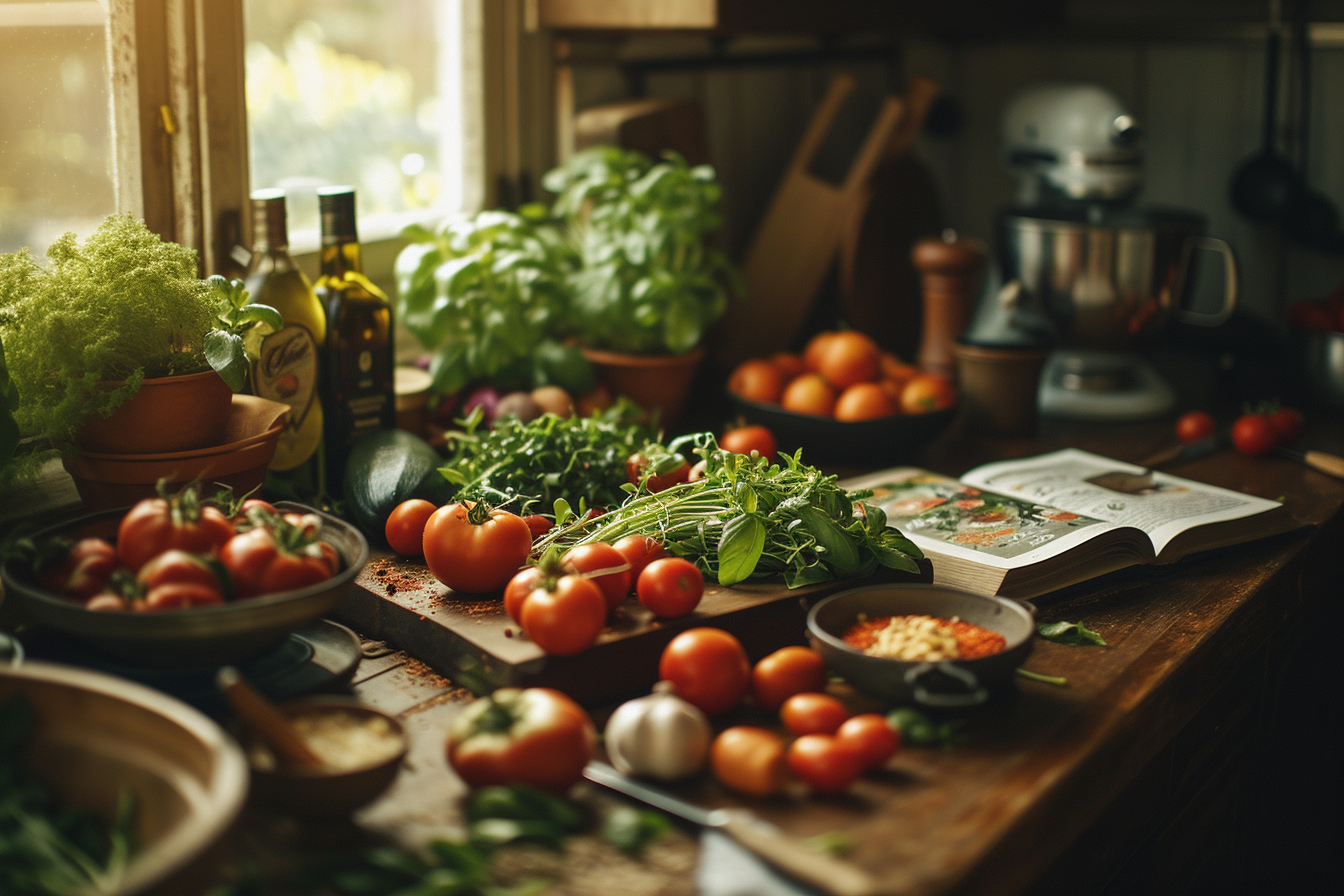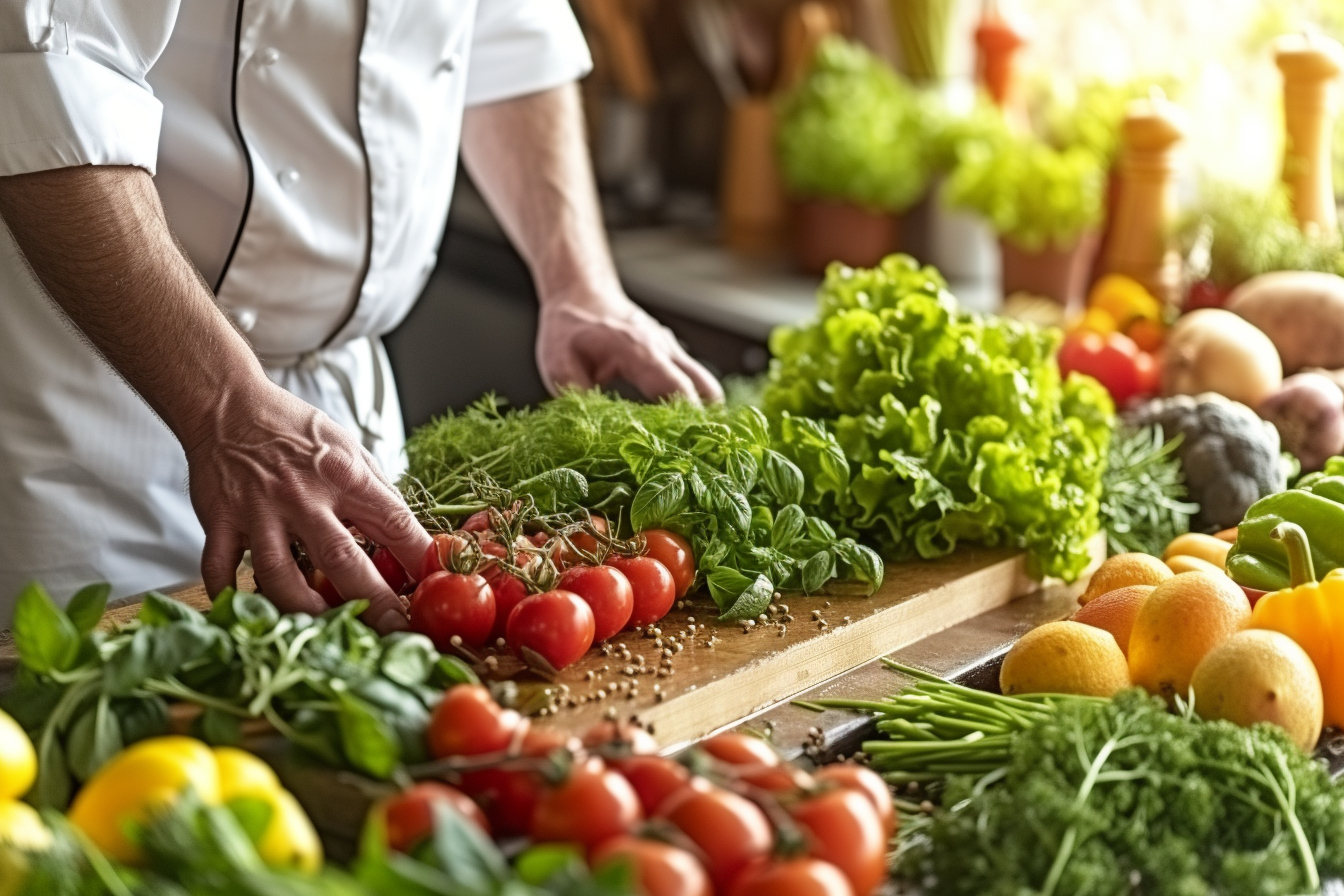Raw vegan cuisine is not just a dietary choice but also an art form, one that demands creativity, patience, and an understanding of how to use ingredients in their purest form to deliver dishes that both delight the palate and nourish the body. As the interest in plant-based lifestyles grows, mastering raw vegan cooking methods becomes increasingly popular among those aspiring to a healthier way of eating and living. This comprehensive exploration delves into the techniques that turn simple vegetables, fruits, nuts, and seeds into culinary masterpieces.
Understanding raw vegan basics
Before embarking on raw vegan culinary exploits, it’s essential to understand what constitutes raw vegan food. Strong emphasis is placed on foods that have not been heated above 118 degrees Fahrenheit (48 degrees Celsius), preserving their nutritional integrity and enzymes. A raw vegan diet includes fresh fruits, vegetables, nuts, seeds, sprouted grains, and legumes.
Embracing these uncooked, plant-based foods requires an appreciation for their natural textures and flavors, which serve as the foundation for all raw vegan dishes. Working with raw foods means unlearning traditional cooking techniques and reimagining how to prepare, combine, and present ingredients.
The art of soaking and sprouting
Soaking nuts, seeds, and legumes is a cornerstone of raw vegan cuisine. It’s a technique designed to enhance digestibility and nutrient availability. Soaking times vary; almonds may take 8-12 hours, while cashews require a shorter duration, typically 2-4 hours. Once soaked, these foods can be rinsed and used to create creamy sauces, dairy-free milks, or even raw vegan cheeses.
Sprouting takes soaking a step further, encouraging seeds or legumes to germinate and sprout. This process further increases the bioavailability of proteins and other vital nutrients. Alfalfa, lentils, chickpeas, and various kinds of seeds can be sprouted over several days and used to add texture and nutritional punch to salads, wraps, and snacks.
The role of dehydration in raw vegan cooking
A food dehydrator is the raw vegan chef’s best ally, responsible for creating textures and flavors that mimic those of traditionally cooked food. Through controlled, low-temperature drying, this appliance can produce chewy or crispy outcomes. Dehydration is ideal for making raw breads, crackers, fruit leathers, and even "baked" goods. Critical to the process is the understanding of timing and temperature settings, which vary from one recipe to another.
Creative techniques for flavor and texture
Without sautéing, boiling, or baking, raw chefs have developed innovative methods to infuse flavor and achieve a variety of textures in their dishes.
Marination: A robust technique that imparts deep flavors into vegetables and fruits. By using acidic components like lemon juice or apple cider vinegar along with herbs and spices, foods such as mushrooms or zucchini can take on a tender, cooked-like quality.
Blending: High-speed blenders can produce smoothies, soups, and sauces with a creamy consistency that can rival that of their cooked counterparts. Blenders are also instrumental in making nut-based creams or "cheeze," which can be flavored and fermented for added complexity.
Fermentation: This age-old preservation method not only provides raw dishes with unique flavors but also introduces beneficial probiotics. Fermented cabbage (sauerkraut), nut cheese, and coconut kefir are staples within this genre, requiring precise control of temperature and time to achieve the desired degree of fermentation.
Pulse and Chop: A food processor is invaluable for creating coarsely textured dishes or "pâtés". Nuts, seeds, and vegetables can be processed together, crafting bite-worthy mixtures perfect for stuffing tomatoes or pepper bells, or for scooping up with raw crackers.
Noodling and Spiralizing: Turning vegetables into ribbons or noodles is an exciting way to engage with raw food. Zucchini, carrot, and beetroot are perfect candidates for spiralizing, offering a playful and aesthetic twist to salads and "pasta" dishes.
Assembling raw vegan meals
The beauty of raw vegan meals comes from their vibrancy and the diversity of ingredients that can be merged to create them. Assembling dishes is about balancing flavors, textures, and nutritional content.
Building a Raw Salad: It’s more than tossing together some greens. Adding nuts for crunch, berries for sweetness, and an emulsified avocado dressing can transform a simple salad into a hearty dish.
Raw Soups: Achieved through blending, raw soups can be rich and satisfying. Avocado lends creaminess, while the inclusion of spices and herbs brings warmth and depth.
Layered Desserts: Parfaits and raw cheesecakes owe their allure to careful layering, contrasting colors, and textures. Utilizing soaked nuts for the "cheese" base and dates with raw cocoa for the crust, these desserts can be remarkably sophisticated.
The health benefits of raw vegan cuisine
Choosing raw vegan methods is not only a path to culinary creativity but also to an array of health benefits. Living enzymes in raw foods may aid digestion, while the high content of vitamins, minerals, and phytonutrients supports overall health.
Moreover, the focus on whole foods minimizes processed ingredients and added sugars, often linked to chronic diseases. As a form of clean eating, raw veganism can rejuvenate the body from the inside out.

Diving into raw vegan cooking methods unlocks a world of culinary potential, challenging the chef to think outside the box and engage with food in its most natural state. This exploration into raw techniques shows that with the right knowledge and tools, any aspiring chef can thrive on a plant-based, raw food journey, crafting dishes that are as nourishing as they are delightful. As we continue to innovate within this space, raw vegan cuisine promises to remain an exciting and evolving craft, offering endless possibilities for those willing to embrace its principles.

Leave a Reply